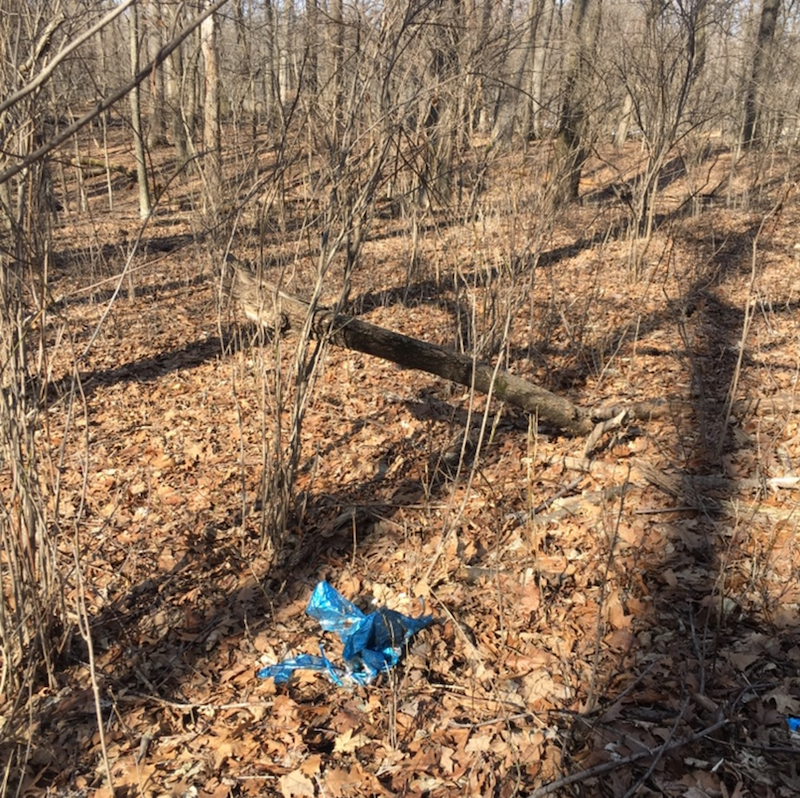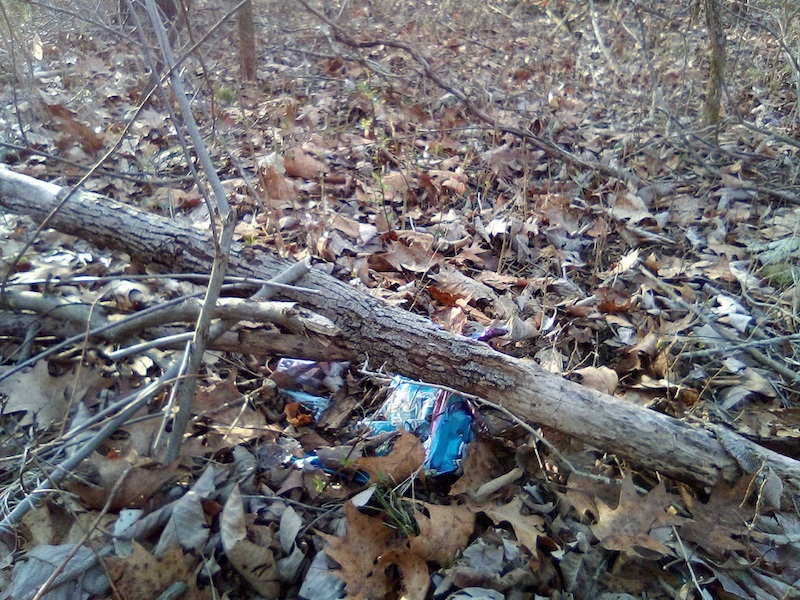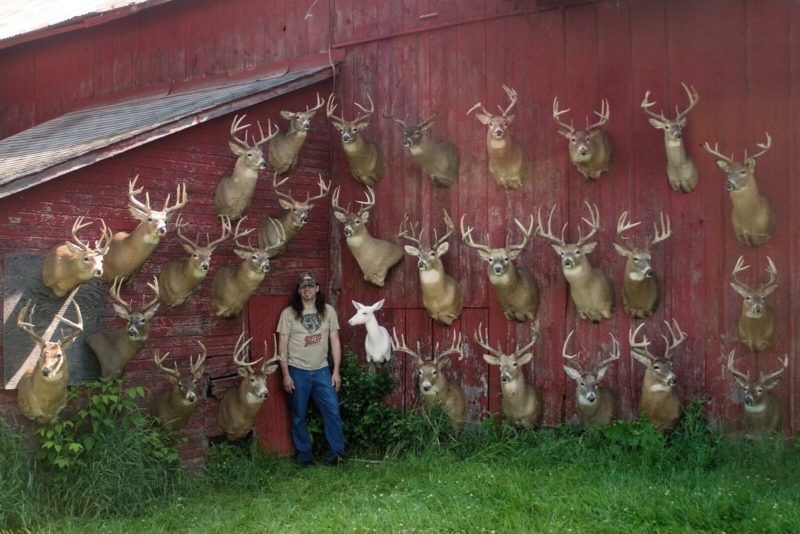Someone posted an interesting observation in February 2019 on Dan Infalt’s forum, thehuntingbeast.com. The post read:
“Every time I find a good deer bedding area, I find balloons nearby. I thought about it, and it’s the air currents’ down draft that carries the balloons there. It’s the same reason deer bed in these spots.”

There has been an ongoing discussion as to whether there is a correlation between balloons and bedding areas, and if so, why. Photo Credit: Hunting Beast User Pete Herbst
That got Infalt thinking. He posted this response on Facebook:
“Balloons and whitetails. … I always pick up trash when scouting, and often it’s balloons. Buck bedding is not random. The reasons they choose spots is being able to detect incoming danger. I’ve often noticed bedding features like draws, valleys and bowls funnel winds from every direction. A buck’s greatest defense is his nose, so that’s no big surprise. But we can’t detect scents like a deer, so we don’t notice these areas. Maybe we find so many balloons in big-buck bedding areas because they choose these spots to monitor the same currents that pull in balloons. … How many of you hardcore whitetail guys have noticed this balloon phenomenon?
“A lot of times these bucks have bulletproof bedding areas. No matter what you do, the wind current is sucking in there. Most of the (balloons) I find, there’s a brushy opening in the woods, and you get a funnel effect with the wind.”

The wind might play a factor. Photo Credit: Hunting Beast User Barker
Mature bucks don’t care about balloons, of course, but they rely heavily on their nose to detect predators; human and otherwise. The fact that stray balloons often ride wind currents into these areas is just a coincidence. So what makes their landing zone a good bedding area?
“It’s usually edge; two terrains meeting, points, fingers,” Infalt said. “Cattail marshes are the easiest terrain (to identify bedding sites). If there’s an island at the tip of those fingers, they’ll have beds on them.”
Elevation is often important, whether it’s a high spot in a marsh or the top third of a hill.
“When you get into elevation, does bed in a group, in a circle, and each watches a different direction,” Infalt said. “Leeward wind is not as important with does as it is with bucks.
“A buck beds all by itself,” Infalt continued. “It wants to look down the hill on the leeward side. The better spot is where there’s a little point on the leeward side, a third from the top.”
In such scenarios, a buck monitors predators with the wind at its back while scanning below for downwind predators. That system makes it hard for predators to approach undetected.
Infalt often scouts such bedding areas in spring to learn where deer bed and where they go after leaving their beds. You might find one exit trail or several trails. A buck’s trail can depend on the time of year. In early fall, a buck might leave its bed and head to an oak woods to eat acorns. Later in the season, it might take a different trail to check out does.
When it’s time to hunt, Infalt creeps close to the bedding site, doing his best not to spook the deer. He said most hunters try to intercept deer closer to a food source, such as a field edge. Although they’re less likely to bump a buck from its bed, that scenario presents problems.
“I’ve watched some (bucks) get up and only move 75 yards in a half-hour,” Infalt said.
Cautious bucks likely never make it to a field edge before shooting hours end. But how close to a bedding area is too close?
“In swamps or marshes, I get within 100 yards; sometimes closer,” Infalt said. “In hilly terrain or more open woods, it’s at least 200 yards. When it’s windy or rainy, I can sneak closer.”
Getting tight to a bedded buck is risky and requires stealth.
“You might get one crack,” Infalt said. “I don’t hunt those spots more than three times a year.”
In this video, watch Infalt identify a buck’s bed, and later slip into a tree 55 yards from the bedded buck!
Infalt said hunters must closely monitor what they see in the woods. During the rut, bucks might move their bedding areas closer to does. He said bucks use these sites for about a week each year at the peak of the rut. These spots are torn up with rubs, but by the time hunters find them, bucks are bedding once more in their usual spots.
Hunters must also monitor changing wind directions when near bedding areas. If the wind switches when you’re near a bedded buck, your hunt is over.
Sometimes bucks get careless, however. Infalt said one buck he hunted liked to bed under a willow in westerly winds. It was a great sanctuary, and surrounded by a field, an overgrown pasture, and tiny patches of cattails. The site offered few possibilities for a sneak. Infalt said the buck bedded there for two seasons. He even found one of its sheds there.

Infalt can’t resist a good hunting day. He is pictured here with some of his many harvests. Photo Credit: Dan Infalt
On Thanksgiving one year, the west wind switched to the east at midday. Infalt ditched Thanksgiving dinner, much to the delight of no one in his family.
The buck didn’t reposition itself when the wind switched, leaving itself vulnerable to a stalk. Infalt put a cattail patch between himself and the buck, crawled through muck, and killed the buck in its bed at 25 yards. The monster 15-pointer grossed in the 180s.
White-tailed bucks might not prance around with helium-filled balloons like children, but if you find a Mylar balloon on your next scouting mission, take heed. The thermals that blew it there are the same ones mature bucks use to monitor threats from a secure location.
For more information about Dan Infalt, visit his website, thehuntingbeast.com.